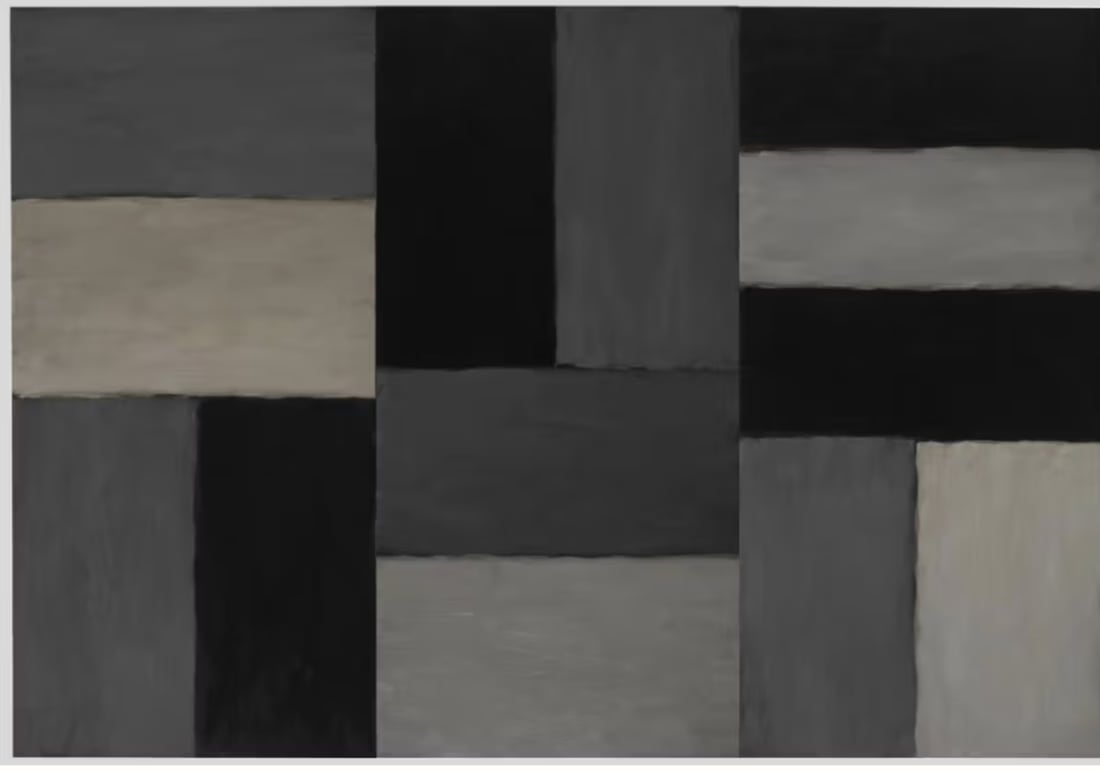Sean Scully's sensitive abstraction at the Centre Pompidou With a selection of works from the early 1970s to his most recent ones
Par Stéphane Renault
À l’occasion d’une donation de l'artiste, l’institution parisienne présente une sélection d'œuvres abstraites du peintre américain, allant du début des années 1970 jusqu’à ses plus récentes productions.
Profitant d’une donation exceptionnelle de l'artiste, représenté par la galerie Thaddaeus Ropac, qui vient enrichir sa collection, le Centre Pompidou consacre une salle à l’œuvre de Sean Scully, né à Dublin en 1945 et installé à New York en 1975, après des études commencées à Londres et poursuivies à Harvard. Cette rétrospective concentre en huit tableaux le développement de son œuvre du début des années 1970 jusqu’à ses plus récentes toiles, 'pour composer le portrait du grand romantique de l’abstraction contemporaine', selon les termes de Michel Gauthier, conservateur au Musée national d’art moderne - Centre Pompidou.' (...)
« Je suis Irlandais Américain. Je suis né en Irlande, j’ai grandi à Londres, et pour les plus cultivés et poètes d’entre nous qui ne voulaient pas devenir maçons, fossoyeurs ou rock stars, Paris était l’endroit où il fallait être, se souvient Sean Scully. Je venais à Paris depuis mon enfance, et j’étais ensorcelé par la ville. Paris était le centre de la culture, et plus particulièrement de la peinture. Lorsque le Centre Pompidou est sorti de terre, je n’ai eu de cesse de vouloir y exposer. Il était important pour moi d’être exposé ici, plus que partout ailleurs, y compris aux États-Unis. ''Comment humaniser l’abstraction ?'' est un leitmotiv dans mon travail. Armin Zweite, le grand critique d’art allemand, a publié un texte fantastique sur cette question. L’enjeu a toujours consisté à libérer le potentiel humaniste de l’abstraction géométrique afin de la ramener à l’expressivité. L’un des principaux outils que j’ai utilisés est bien sûr la couleur. Au fil de ma carrière, elle évolue d’une forme très linéaire à un corpus où la couleur mais aussi la forme, l’application, le style, tout interagit. Un jour, j’ai vu au musée Isabella Stewart Gardner de Boston un tableau datant des jeunes années de Rembrandt, un paysage marin, très linéaire. J’ai alors pensé à ses portraits tardifs, extrêmement émouvants. Cela m’a vraiment inspiré, et m’a donné en un sens une indication sur ce que je devais faire. Bien sûr, c’est plus facile à dire qu’à faire. »
Translated
By Stéphane Renault
On the occasion of a donation from the artist, the Paris institution is presenting a selection of abstract works by the American painter, from the early 1970s to his most recent productions.
Taking advantage of an exceptional donation from the artist, represented by the Thaddaeus Ropac gallery, to enrich its collection, the Centre Pompidou is devoting a room to the work of Sean Scully, who was born in Dublin in 1945 and moved to New York in 1975 after studying in London and at Harvard. In eight paintings, this retrospective focuses on the development of his work from the early 1970s to his most recent canvases, ‘creating a portrait of the great romantic of contemporary abstraction’, in the words of Michel Gauthier, curator at the Musée national d'art moderne - Centre Pompidou. (...)
'I'm Irish American. I was born in Ireland, grew up in London, and for the more cultured and poetic among us who didn't want to be bricklayers, gravediggers or rock stars, Paris was the place to be,” recalls Sean Scully. I'd been coming to Paris since I was a kid, and I was bewitched by the city. Paris was the center of culture, especially painting. When the Centre Pompidou was built, I couldn't stop wanting to exhibit there. It was important for me to be exhibited here, more than anywhere else, including the United States. How to humanize abstraction” is a leitmotif in my work. Armin Zweite, the great German art critic, published a fantastic text on this question. The challenge has always been to liberate the humanist potential of geometric abstraction and bring it back to expressiveness. One of the main tools I've used is, of course, color. Over the course of my career, it has evolved from a very linear form to a corpus in which color, but also form, application and style, all interact. One day, at the Isabella Stewart Gardner Museum in Boston, I saw a painting from Rembrandt's early years, a very linear seascape. It made me think of his extremely moving late portraits. It really inspired me, and in a way gave me an indication of what I should do. Of course, that's easier said than done.' (...)


















































































































































































